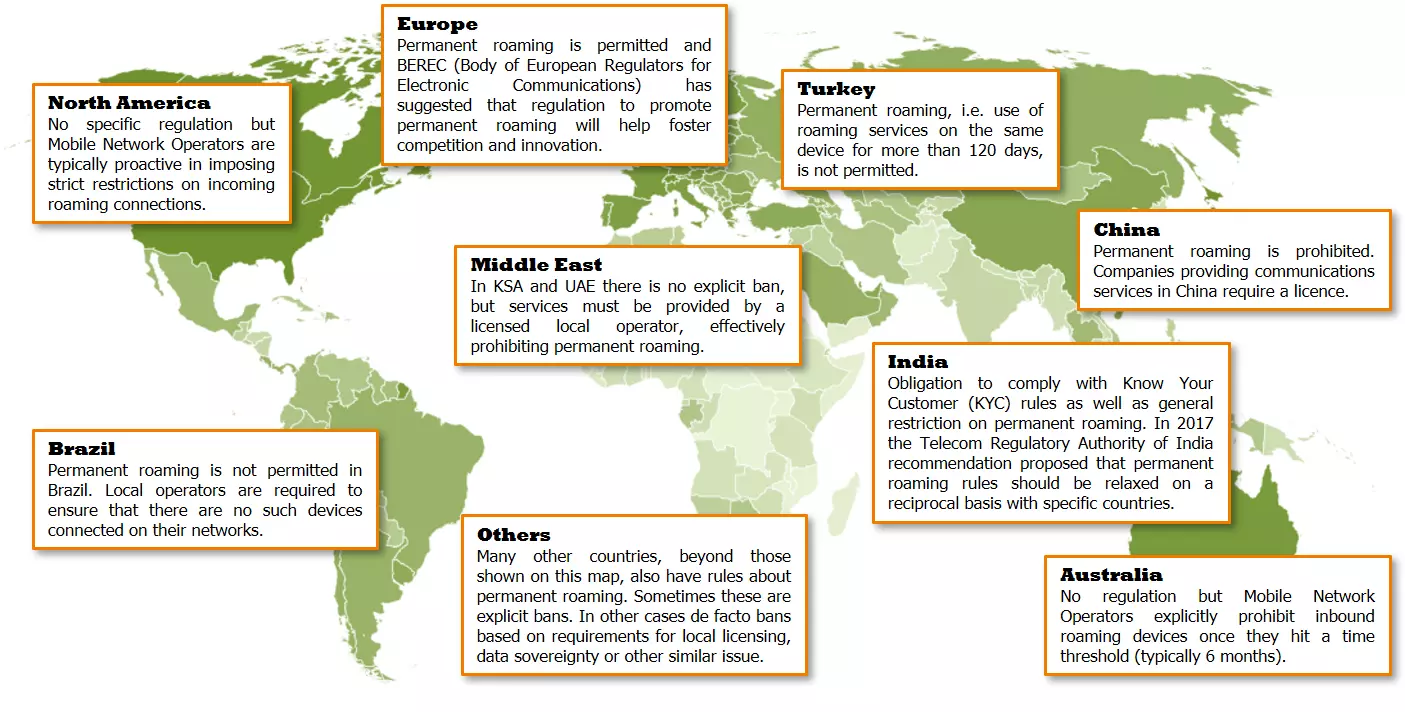
Permanent roaming in challenging markets worldwide
In this comprehensive guide, we’ll delve into the intricacies of permanent roaming, explore the challenges it poses for global IoT deployments, and unveil effective solutions to conquer them. Buckle up, and let’s navigate the exciting world of global IoT connectivity!
Imagine a scenario where you’re a manufacturer of smart bikes with global ambitions. You envision your bikes seamlessly connecting to the internet, transmitting data and enhancing the cycling experience for users worldwide. But then you hit a roadblock – permanent roaming restrictions.
What exactly are permanent roaming restrictions, and how can they cripple your global IoT dreams? Let’s unpack this challenge and discover how to steer clear of it.
Demystifying Permanent Roaming: A Double-Edged Sword for IoT
Traditionally, roaming has been a boon for travelers, ensuring they stay connected with their devices while abroad. However, the landscape shifts dramatically for IoT deployments. Here’s why:
-
Designed for Short-Term Use: Roaming was envisioned for temporary situations like vacations or business trips. IoT devices, on the other hand, are designed to function for extended periods in a foreign network.
-
Data Consumption on Steroids: Unlike a phone with occasional browsing, IoT devices can gobble up significant data transmitting sensor readings and updates. This can strain networks and lead to hefty charges for mobile operators.
These factors have led several countries to impose restrictions or outright bans on permanent roaming for IoT devices. This throws a wrench into the plans of global IoT businesses, making it difficult to manage deployments across borders.

Source: Transforma Insights Permanent roaming, by Matt Hatton, 26 May 2021
Navigating the Maze: Solutions for Seamless Global IoT Connectivity
So, how do you overcome these permanent roaming hurdles and ensure your smart bikes (or any other IoT devices) stay connected globally? Here are a couple of effective strategies:
- Embrace the Power of Multi-IMSI SIMs: Multi-IMSI SIMs are game-changers for global IoT deployments. They contain multiple IMSIs (International Mobile Subscriber Identities) within a single SIM card. As your device travels, the SIM intelligently selects the most suitable local IMSI, ensuring compliance with regulations and seamless connectivity.
Think of it as a magic passport for your devices, granting them network access anywhere they roam.
- Partner with a Global IoT Connectivity Provider: Managing multiple connectivity providers, contracts, and regulations across borders can be a logistical nightmare. A global IoT connectivity provider simplifies this process by offering a one-stop shop for all your connectivity needs.
Imagine a single point of contact handling everything from SIM provisioning to data management, allowing you to focus on your core business.
By leveraging these solutions, you can conquer the challenge of permanent roaming restrictions and unlock the true potential of global IoT deployments. Your smart bikes can then connect seamlessly across the globe, providing an unparalleled cycling experience for users everywhere.
Conclusion
Permanent roaming restrictions can be a roadblock for global IoT deployments, but they don’t have to be a dead end. By understanding the challenges and implementing the right solutions like multi-IMSI SIMs and global IoT connectivity providers, you can ensure your devices stay connected and your business thrives in the exciting world of global IoT.









